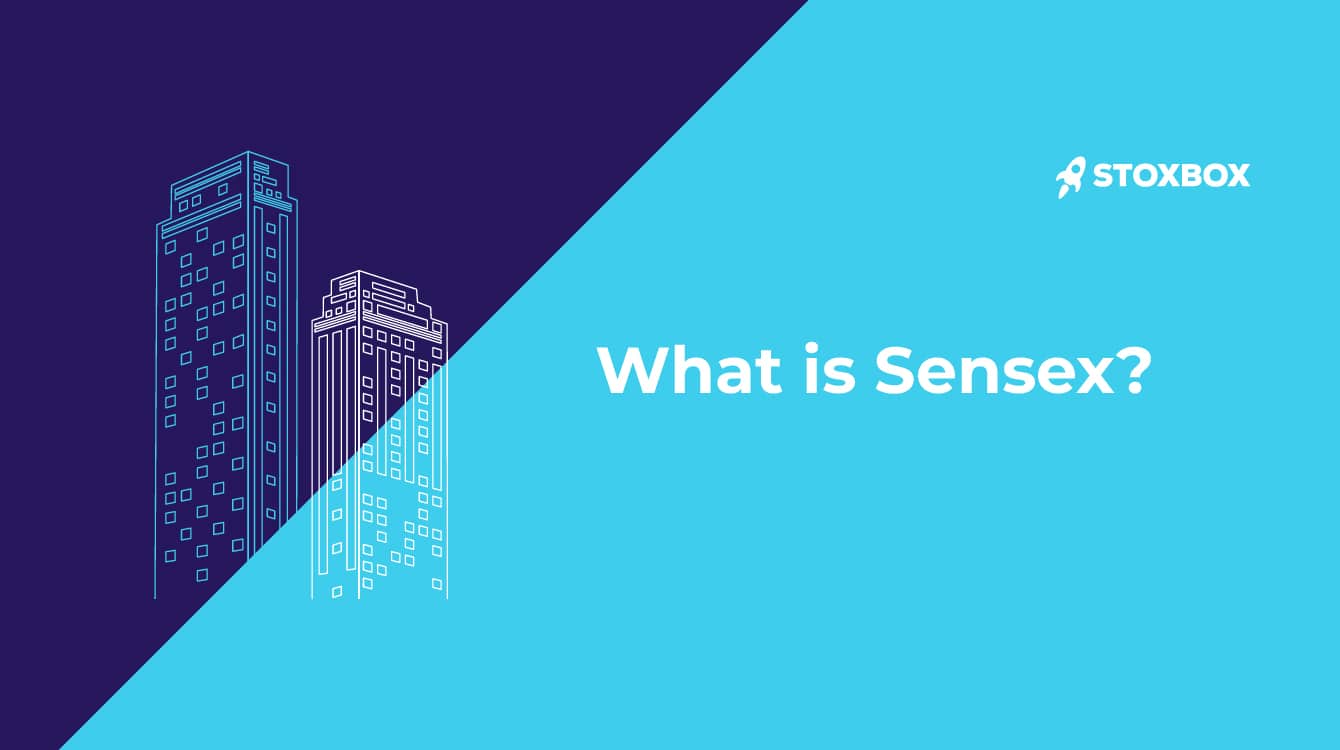What is Sensex?
We all look at the Sensex numbers, be it on news channels, newspapers or financial sites — sensitive index is commonly known as SENSEX.
Sensex, Nifty make gains but trade flat. Twenty-one past Sensex stocks outrun index, peers.
It basically depicts the Total M-Cap of the 30 stocks as of today (suppose 11th December) to the base year M-Cap which is 1978-79, depicted through points. Sensex was first compiled in 1986. Let us take 100 points as a base value of the Sensex. This is for the purpose of ease of calculation and to represent the change in terms of percentage logically. So, the next day, if the market capitalization moves up 15%, the index also moves 15% to 115.
It is constituted of a basket of 30 stocks which represents large, liquid companies that represents a bird’s eye’s view of overall market movement. Sensex Free Float Capitalization methodology is used while calculating this.
The market capitalization of a company is determined by multiplying the prevailing price per share, with the number of shares that the company has issued.
Let us take 100 has a base value for the SENSEX
For example, if Company XYZ has issued 2 lakh shares with a market price of Rs 100, then the market capitalization of this company will be 200000, which is the number of shares multiplied by 100= 2,00,00,000.
The proportion of total shares issued by the company which is readily available for trading for the market are called free-float market capitalization.
It ideally does not include promoters’ holding, government holding, strategic holding and other locked-in shares that will not come to the market for trading in the normal course. In other words, the market capitalization of each company in a Free-float index is the number of shares readily available for trading in the market. Company ABC has 5000 shares in total, out of which 3000 shares are held by the promoters, now only 2000 shares are available for the public. Hence 2000 shares are free-floating shares.
Let us assume the index consists of only two stocks: Stock XYZ and Stock ZYX.
Suppose company XYZ has 1,000 shares in total, of which 200 are held by the promoters so that only 800 shares are available for trading to the public.
Furthermore, company ZYX has 2,000 shares out of which the promoters hold 1,500, and the rest 500 are free-floating.
Thus, the ‘total’ market capitalization of company XYZ is Rs 120,000 (1,000 x 120), but its free-float market capitalization is Rs 96,000 (800 x 120).
The total market capitalization of company ZYX will thus be Rs 400,000 (2,000 x 200), but its free-float market cap is only Rs 100,000 (500 x 200).
Market capitalization of the index as of today (i.e. stocks XYZ and ZYX) is Rs 520,000 (Rs 120,000 + Rs 400,000); and the free-float market capitalisation of the index is Rs 196,000. (Rs 96,000 + Rs 100,000).
The year 1978-79 is taken as the base year with an index value of 100. It means that suppose at that time the market capitalization of the stocks that comprised the index then was, say, 40,000 (remember, at that time there may have been some other stocks in the index, not XYZ and ZYX, but that does not matter), then we assume that an index market cap of 40,000 is equal to an index value of 100.
So, the value of the index today is = 196,000 x 100/40,000 = 490
This is how the Sensex is calculated.
The factor 100/40000 is the index divisor.
Some Myths:
- Sensex does not represent the overall market scenario.
- It also does not show sector-specific data, as Sensex includes stocks from different sectors. (Adani ports – Infra, Asian Paints – Paints, Axis Bank – Pvt Sector Bank, Bajaj Auto – Auto, Bharti Airtel – Telecommunications are some of the scrips comprising Sensex)
Refer to the below indices for the sector-specific date. (below are just some of the many indices)
- BSE 100
- AUTOBSE
- BANKEX
- BSE DOLLEX
- BSE FMCG
- BSE HC
- BSE IPO
- BSE IT
- BSE METAL
- BSE MIDCAP
- BSE OIL&GAS
- BSE POWER
- BSE PSU
- BSE REALTY
- BSE SENSEX
- BSE SMLCAP
You might also Like.
Beginners Guide to Candlesticks and Candlestick Patterns
When you invest in the stock market, you need to look...



